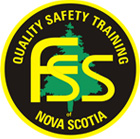Defective Tools
Hazards Identified
Eye injuries, injuries to hands and fingers
Hazard-Specific Personal Protective Equipment
CSA approved eye and face protection (i.e. face shield, safety glasses with side shields, gloves)
Hazard-Specific Training
Supervision and training by a person competent
Safe Work Practice
Defective tools can cause serious and painful injuries. If a tool is defective in some way,
DON’T USE IT.
Be aware of the problems like:
- Chisels and wedges with mushroomed heads
- Split or cracked handles
- Chipped or broken drill bits
- Wrenches with worn out jaws
- Tools which are not complete, such as files without handles
To ensure safe use of hand tools, remember:
- Never use a defective tool
- Double check all tools prior to use; and
- Ensure defective tools are repaired
Air, gasoline or electric power tools, require skill and complete attention on the part of the user even when they are in good condition. Don’t use power tools when they are defective in any way.
Watch for problems like:
- Broken or inoperative guards
- Insufficient or improper grounding due to damage on double insulated tools
- No ground wire (on plug) of cords of standard tools
- The on/off switch not in good working order
- Tool blade is cracked
- The wrong grinder wheel is being used, or
- The guard has been wedged back on the power saw
Regulations, Standards and References
Occupational Safety General Regulations
